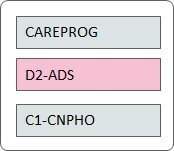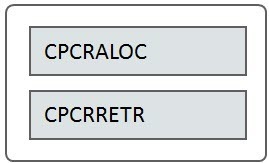The Periodic Processes
The following diagrams illustrate the dependencies between the periodic background processes. You may want to consider running these processes more or less frequently than suggested (depending on business requirements).
Periodic Processes: Weekly
The following processes should be run roughly once a week, or as per business requirements.

Periodic Processes: Monthly
The following processes should be run at least once a month, or as per business requirements.

Periodic Processes: Annually
The following processes should typically be run once a year, or as per business requirements.

Periodic Processes: Per Business Requirements
The following processes should be run as frequently as dictated by business requirements.

The mnemonics in the boxes refer to the individual batch processes described above.
Few dependencies exist. As you can see, there are few dependencies between the boxes (meaning they may be run in parallel).
TOU Map Data Generation
TOU map data must be in place for all TOU maps used in usage calculations. Generation of this data is performed using the “Time of Use Map Data Generation Monitor” batch control (D1-TOUTR). This process can be performed for long time periods, such as a year, generating data for all time-of-use maps for the entire following year, or it could be done more frequently, such as whenever schedules are updated via the TOU map templates
